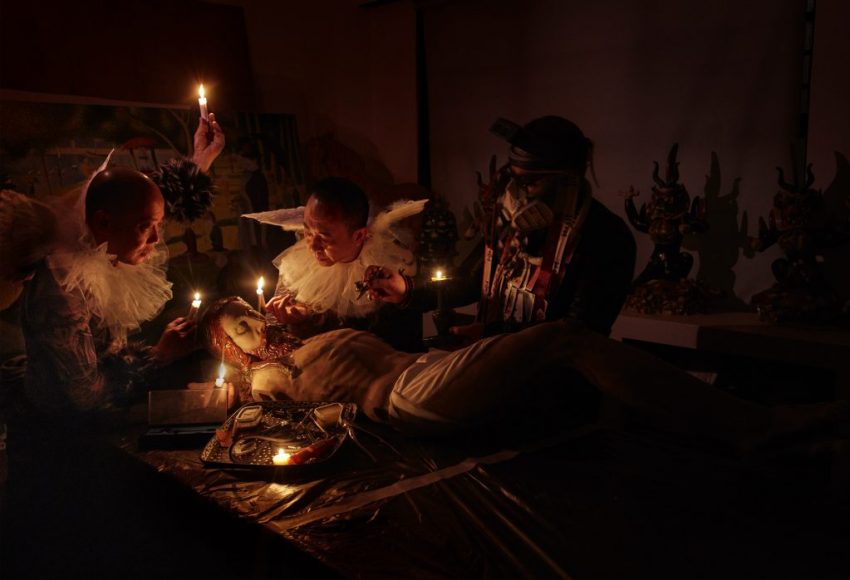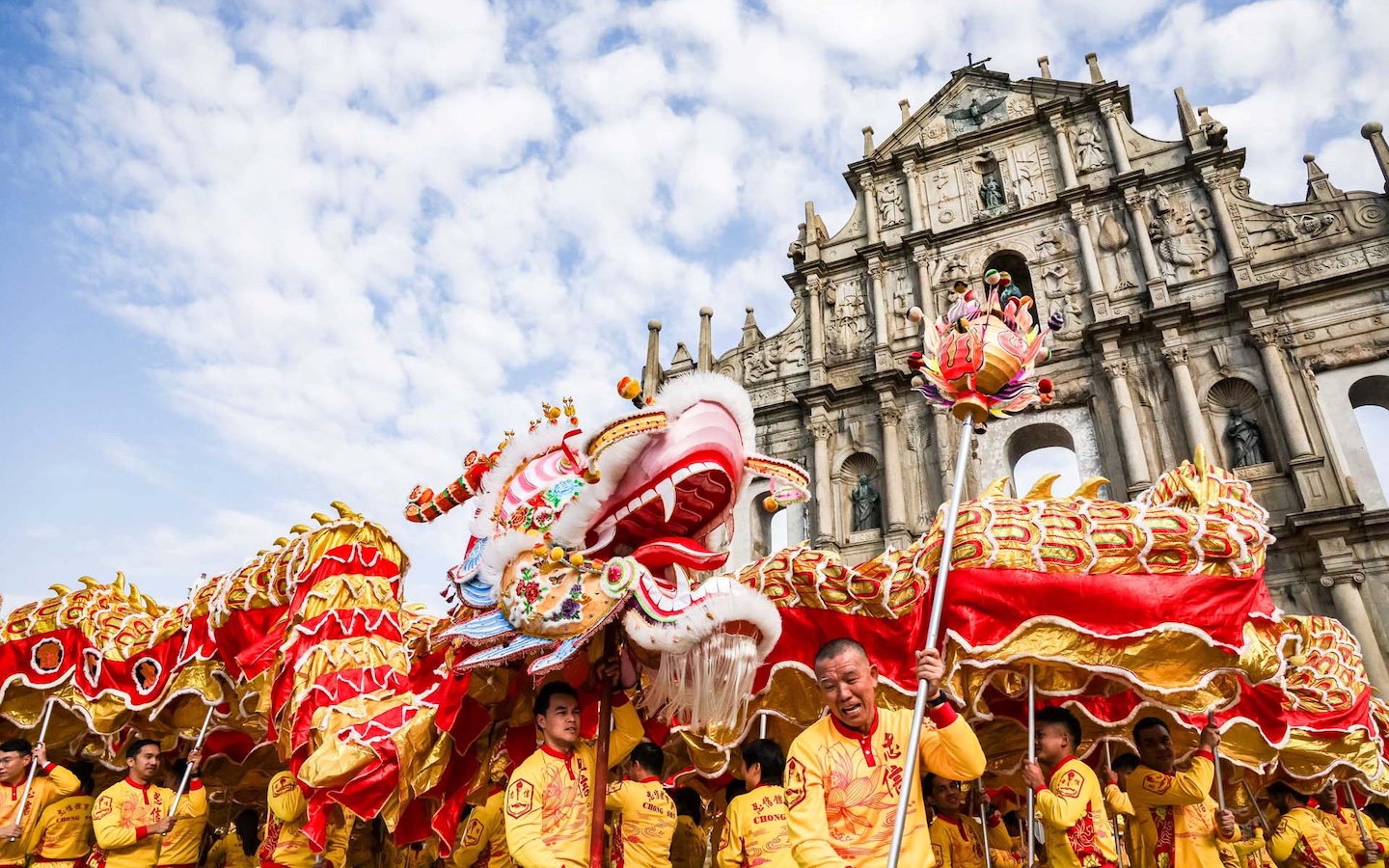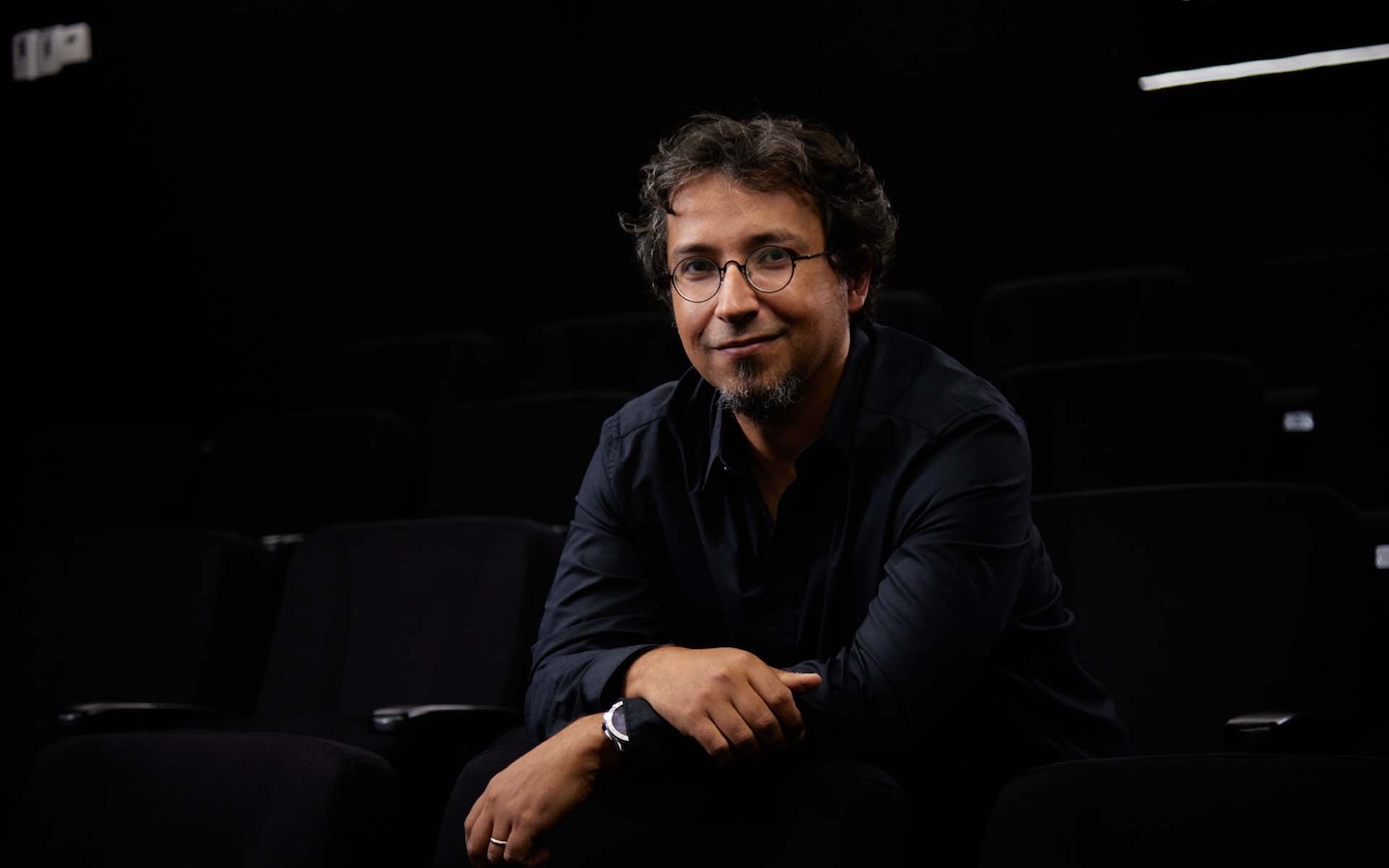Macao is enthrallingly depicted across five colour-coded chambers as part of a new exhibition in Portugal by the SAR’s artistic YiiMa duo. Visitors can take a journey through time at the Berardo Collection Museum.
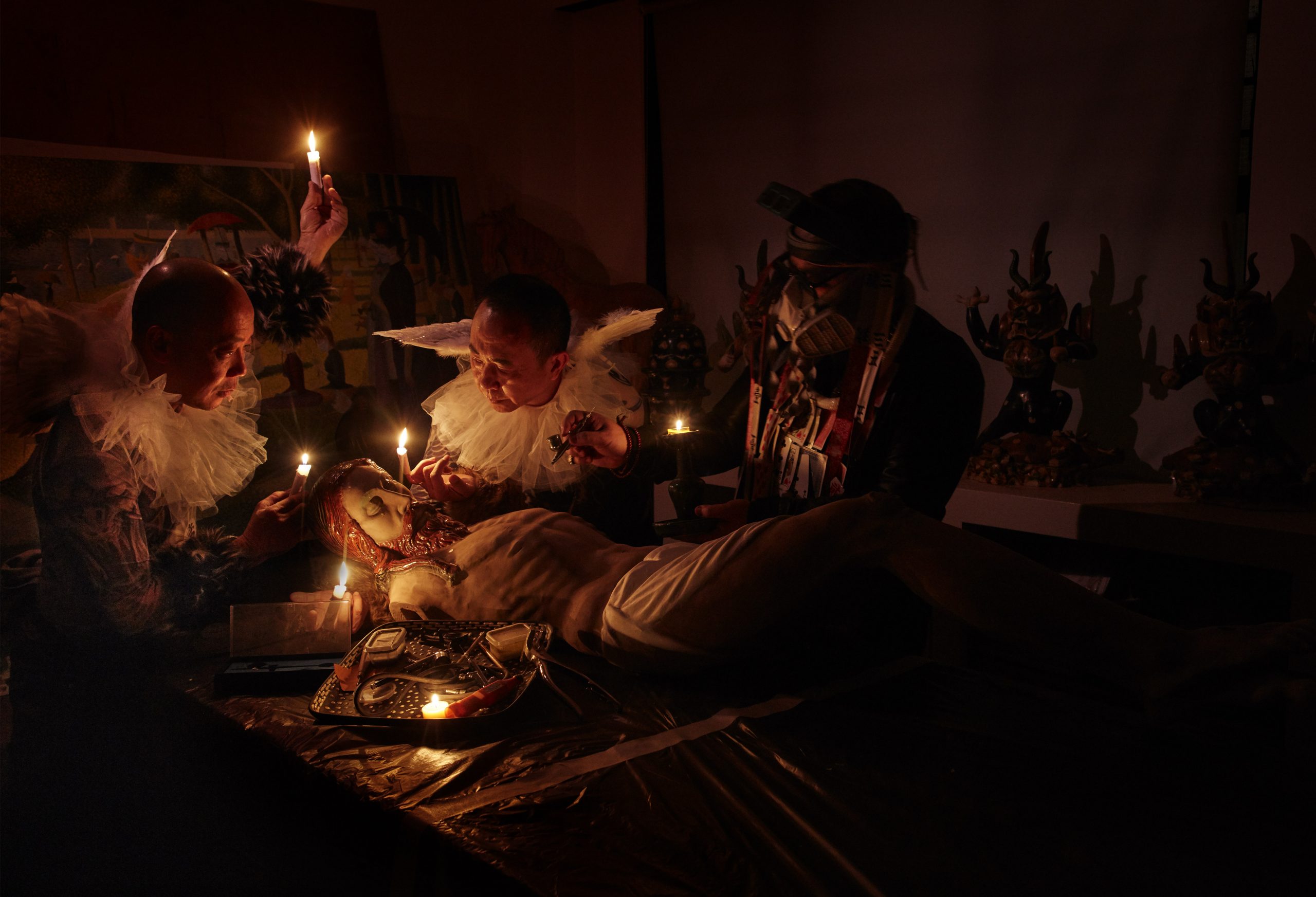
An explosion of colours greets visitors in each of the five chambers in the exhibition, which has been put together by artist duo YiiMa – Ung Vai Meng and Chan Hin Io, both from Macao. There is plenty of conceptual photography on display and the whole show, which includes 50 unpublished works, marks the 20th anniversary of Macao’s handover of administration to the People’s Republic of China in December 1999, as well as the 40th anniversary of the establishment of diplomatic relations between Portugal and the Middle Kingdom.
YiiMa, which, when spoken, means ‘twins’ in Cantonese, presents a body of works from over the past two years in the exhibition. The artists were originally challenged by lawyerturned-curator João Miguel Barros, who is also a photographer, to work on a unique concept and bring it to Portugal. So they did just that.

Encounters of East and West
On our visit, museum curator Rita Lougares says that the exhibition is dear to her because of the connection it has to the 20th and 40th anniversary celebrations and she adds that ‘(De)Construction of Memory’ is ‘clearly a collection of works inspired by the encounters of the East and the West’. “The title of this exhibition,” she says, “derives from the fact that memory often betrays us. Therefore, the exhibition, like our memory, has no chronological sequence. It is a collection of memories. Concepts of Chinese philosophy have a strong presence, as have numerous depictions of churches, Catholic rituals and other references to Western culture, making it a true multicultural experience.”
Someone who does not know Macao will probably not leave this gallery knowing it. However, there are distinctive elements of the city on display.
What makes the exhibition all the more enthralling is that despite it leading visitors on a journey through Macao, the city itself is not depicted as a tangible space in any way. “Someone who does not know Macao will probably not leave this gallery knowing it,” says João Miguel Barros. “However, there are distinctive elements of the city on display.” Indeed, the collection, which also contains works of sculpture and even poetry, can be, at least, viewed as intrinsically a product of Macao. “Everything we do is aimed at promoting local culture, even if not directly,” explains Chan Hin Io, the photographer of the duo. “That is why we brought a sculpture in bamboo. You can probably tell it mimics the structure of a church. That is not a coincidence.”

The artists agree that the encounter of cultures comes natural to them. “As two people who grew up in Macao,” says Ung Vai Meng, painter and the first director of the Macau Museum of Art in 1999, “we cannot really always understand where the sphere of influence of the Portuguese culture begins and where the Chinese [influence] ends. For us, Macao, with its melting pot of East and West, is our reality. The two cultures have cohabited for so long in a peaceful environment, showcasing mutual respect, that they have ended up meshing together.” The result, concludes Ung, who is also a former president of the Cultural Affairs Bureau, ‘is Macao’.
A chamber collective
In ‘(De)Construction of Memory’, the photos on the walls are mostly in full colour, with the exception of those in the ‘Ritualism’ section, where black and white reigns supreme. The artists worked hard not only in creating the concepts that the viewer can see at play in every image on display but also in playing the role of models themselves, often depicting themselves with wings. “We are not angels – you never see angels this old,” says Ung with a smile. “We are meant to be like Icarus, fleeing for our freedom and observing the world below us.”
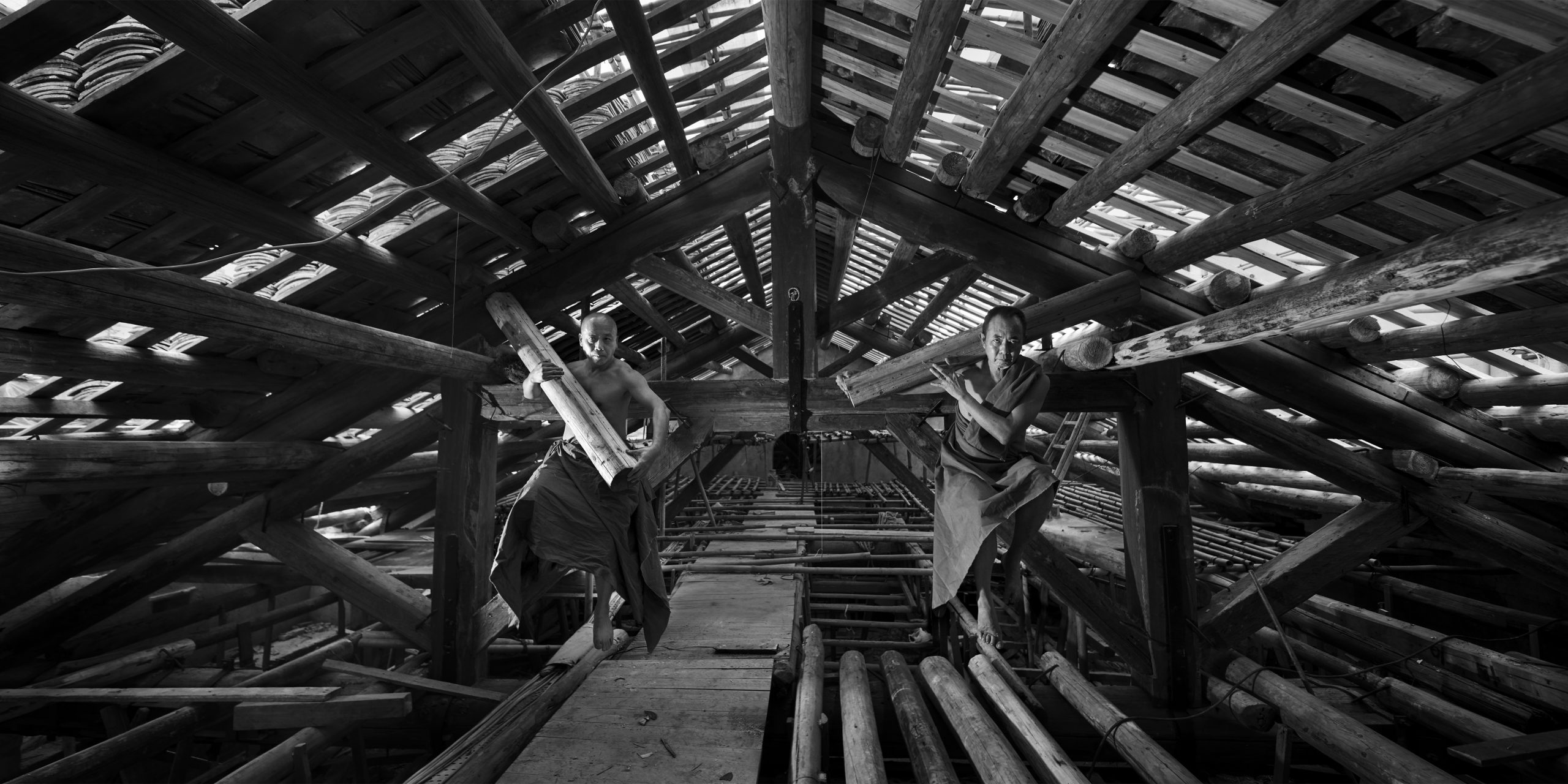
The first chamber is a mosaic that’s made up of a series of delicate and historically sensitive images. The artists say it represents Macao’s 500 years of history and memory. Upon entering the teal blue room that follows, however, visitors are greeted to a collection of photographs that have bamboo structures as their common denominator. In one piece – a massive installation in the centre of the room – a comparison is drawn between a Chinese pavilion and a tomb at the Batalha Monastery, which is around 100km north of Lisbon and was built to commemorate the victory of the Portuguese over the Castilians at the battle of Aljubarrota in 1385. “In addition to a series of significant large-scale images,” says Ung, “we include a large bamboo sculpture in this section, representing the synthesis between the octagonal tomb in the Batalha Monastery and the typical Chinese pavilion style.”
Ironically, ‘Lightness’ is the black room in the middle of the exhibition space. Here, a new visual experience awaits, a video shot in a ‘secret room’ in Macao. Bodies move in a gravity-free environment to a cappella songs performed by the Water Singers, an all-female vocal group that’s also native to the city. The bodies here represent the ascension to heaven and the fall to hell.

Art, heritage and Macao
Although both artists and the curator agree that the exhibition is ‘not intended to promote local art in general’, Ung does believe that the art movement in Macao is ‘gaining momentum’ at the moment, with a ‘number of artists representing Macao in events around the world’ like YiiMa is doing in Lisbon. He notes that Macao artists displaying their work at the Venice Biennale, such as Lam Sio Man and Heidi Lau at May’s 58th edition, are a ‘good example’ of this.
“If I had to describe it,” says Barros, “I would say this is an exhibition that features the heritage of the city and how it has changed throughout the years. The best example of this is perhaps the work ‘Central’ [which is a Portuguese word in this context, meaning ‘power plant’ in English. It is in the first chamber]. The picture was taken in what once was a major building in the city but has since been demolished. However, I want to highlight that this is not an exhibition about heritage. There is no subliminal political message on how to preserve it or even the necessity to do so. This is about what is left behind in our memory.”
Ung agrees, citing a book he wrote on other artists which was published in English and Chinese in 1998. “When I wrote ‘Pearls of Memory’,” he says, “I did an exhaustive research on local heritage. I catalogued a series of objects I thought were of importance to the collective memory. But this exhibition is not about that. It is about the symbolism behind these items. It is about art.”
